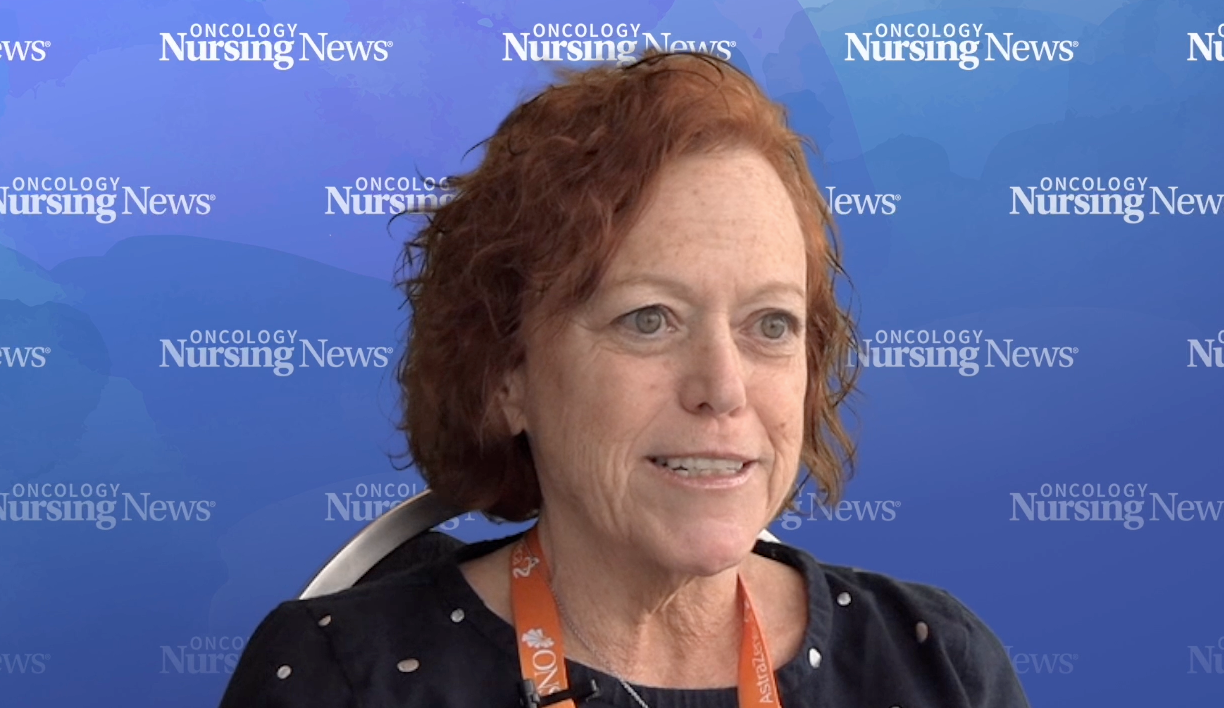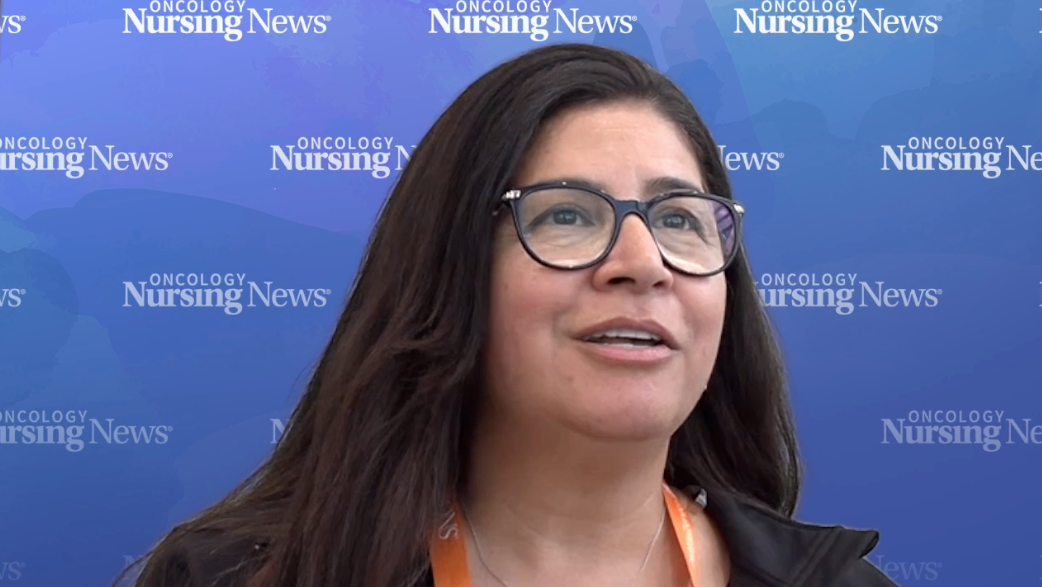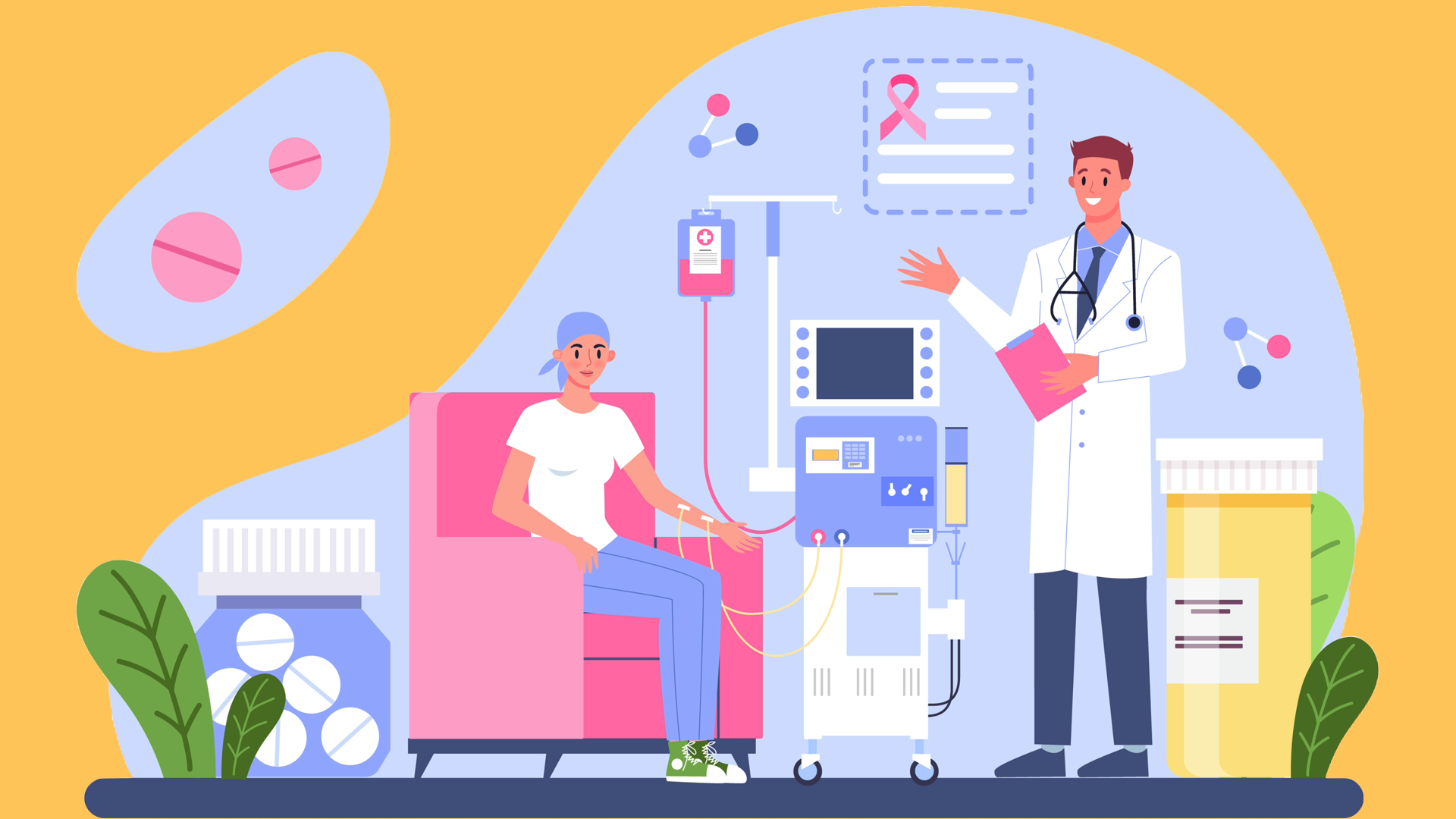Patient-Reported Symptoms via Mobile App May Help Expedite GVHD Identification, Treatment
A feasibility study on the use of a mobile application for patients after undergoing a stem cell transplant may help care teams quickly identify and treat graft-versus-host disease.
Patient-Reported Symptoms via Mobile App May Help Expedite GVHD Identification, Treatment

As early graft-versus-host disease (GVHD) symptom reporting and long-term symptom monitoring are critical to post-stem cell transplant care, patients may benefit from an easy-to-use phone application to capture and report symptoms, according to recent study results.
Findings from this feasibility study were presented at the 49th Annual Oncology Nursing Society Congress.
“The takeaway is that we need to identify symptoms of GVHD as early as possible,” KC Clevenger, Ph.D., RN, BC-PNP, FAAN, Chief Nursing Officer of Wilmot Cancer Institute and associate professor of clinical nursing at University of Rochester Medical Center in New York, said during the presentation. “A mobile app like this might help patients not only identify the symptoms and the timeliness, but the earlier these symptoms are identified, the more likely it is we can treat them and have a stronger impact.”
Of the 19 participants enrolled into the study (mean age, 54.5 years), 94% had leukemia and bone marrow disorders, and almost 55% were conditioned with non-ablative regimens. Seventeen participants completed all 30 days of symptom tracking, and 12 participants continued to use the application after the study was complete, “which was very surprising to us,” Clevenger said.
She noted that the feasibility threshold (defined as at least 50% utilization at least once per week for 4 weeks) was met at 68%, “which was well above our anticipated 50%.” The average number of days patients used the application for symptom tracking was 17 out of the 30 days; weekly engagement of the application was 3 days; and average weeks active in the application was 3.5 weeks of the 4-week study.
With regards to usability (defined as at least 50% of patients giving the application a system usability scale score of at least 20), 89% gave the application a score of 20 or higher, and 73% of participants said that the application was easy to learn. In addition, 86% of participants reported that the application was accessible and 84% noted that the application was intuitive.
Once a participant was enrolled into this study, they were onboarded on the use of the application, and they created an account profile. Participants would enter information about their first symptom, during which the application would allow them to track their symptoms daily. There would be a weekly symptom review until the end of the study at day 30, during which the participant would complete a post-study survey on their application experience.
An allogenic stem cell transplant may be curative for some cancer types like leukemia and lymphoma, although GVHD is a common complication that may influence patient survival and their quality of life.
“GVHD typically occurs around day 100, but it can develop at any stage posttransplant, so awareness of early symptom identification is critical, especially since early diagnosis has been shown to influence the severity of the disease,” Clevenger said.
Several challenges lie in identifying chronic GVHD such as there is no widely accepted clinical or laboratory diagnostic test, making patient reporting critical in diagnosing it. Also, symptom reporting impacts chronic GVHD development severity, and patients typically decrease the frequency of routine visits around day 100 posttransplant. Currently there are no tools for easy patient symptom identification and reporting, resulting in delays in diagnosis and treatment.
“For now, we are reliant on patient reporting for early symptom identification,” Clevenger said. “And in talking to our patients before this study, what we found was that they didn't want to report [symptoms] to us. They didn't want to bother the nurses and the physicians, and they didn't think the symptoms were severe enough. So we did a lot of education, but we still had this resistance [from patients] to tell us their symptoms.”
This motivated Clevenger and her colleagues to look into a chronic GVHD-specific mobile health application that would allow the care team to monitor symptoms between scheduled clinic visits and served as a repository for symptom type, onset, and severity. Patients could report their symptoms in a timely manner and obtain real-time education about their symptoms.
In particular, the team utilized the Wave Health application, which has already been used in other cancer populations. The application was modified to emphasize common GVHD symptoms via the Lee Symptom Scale and to include patient education links and survey completion capabilities.
With this study, the researchers aimed to see whether the mobile health application is a feasible and usable way to track symptoms for adult patients who underwent stem cell transplantation. Particularly, they were looking into whether the application was user friendly, if patients would use it consistently, how often they would use it, and if the cancer team used the reports.
“So we identified the app, we modified it, and then this is a report that is inside the application. They can review it that day, they can download it. And eventually the goal will be that it will talk to the electronic medical records,” Clevenger said.
Reference
Oliva J, Rulli B, Knapp-Clevenger R. Feasibility and Usability of a Mobile Health Application (mHA) for Chronic Graft-Versus-Host Disease Symptom (cGVHD) Tracking in Allogeneic Stem Cell Transplant (SCT) Patients: An Interim Report. Presented at: 49th Annual Oncology Nursing Society Congress; April 24-28, 2024; Washington D.C.




